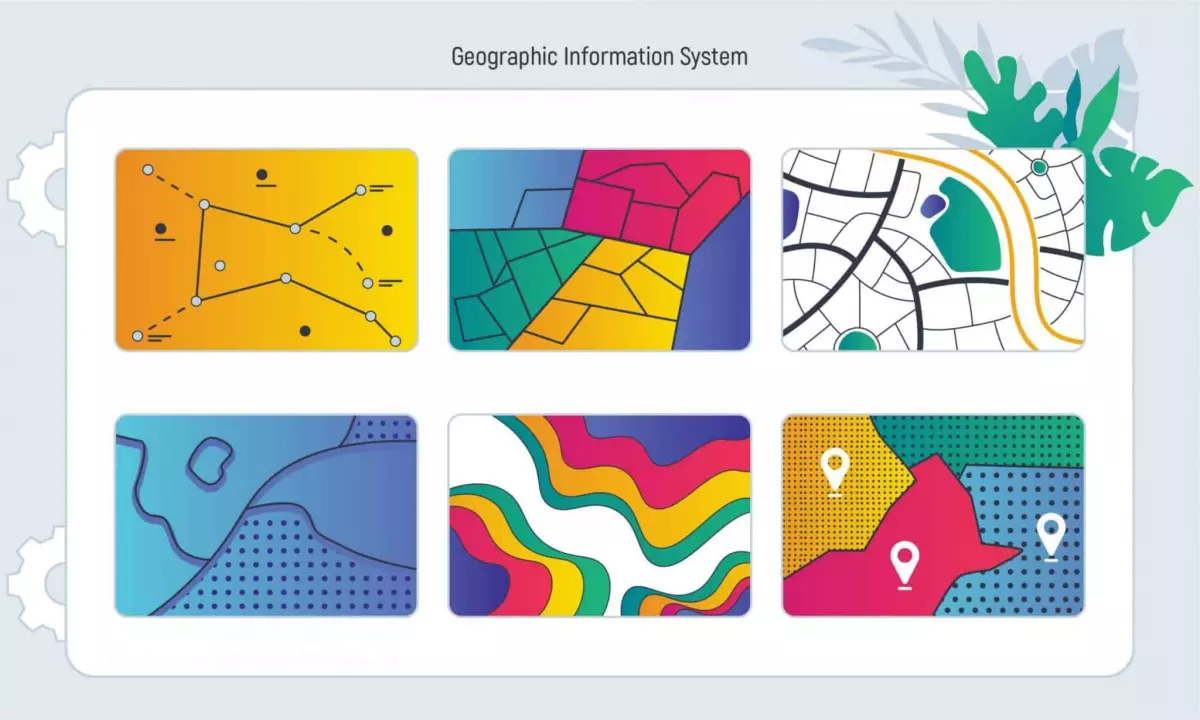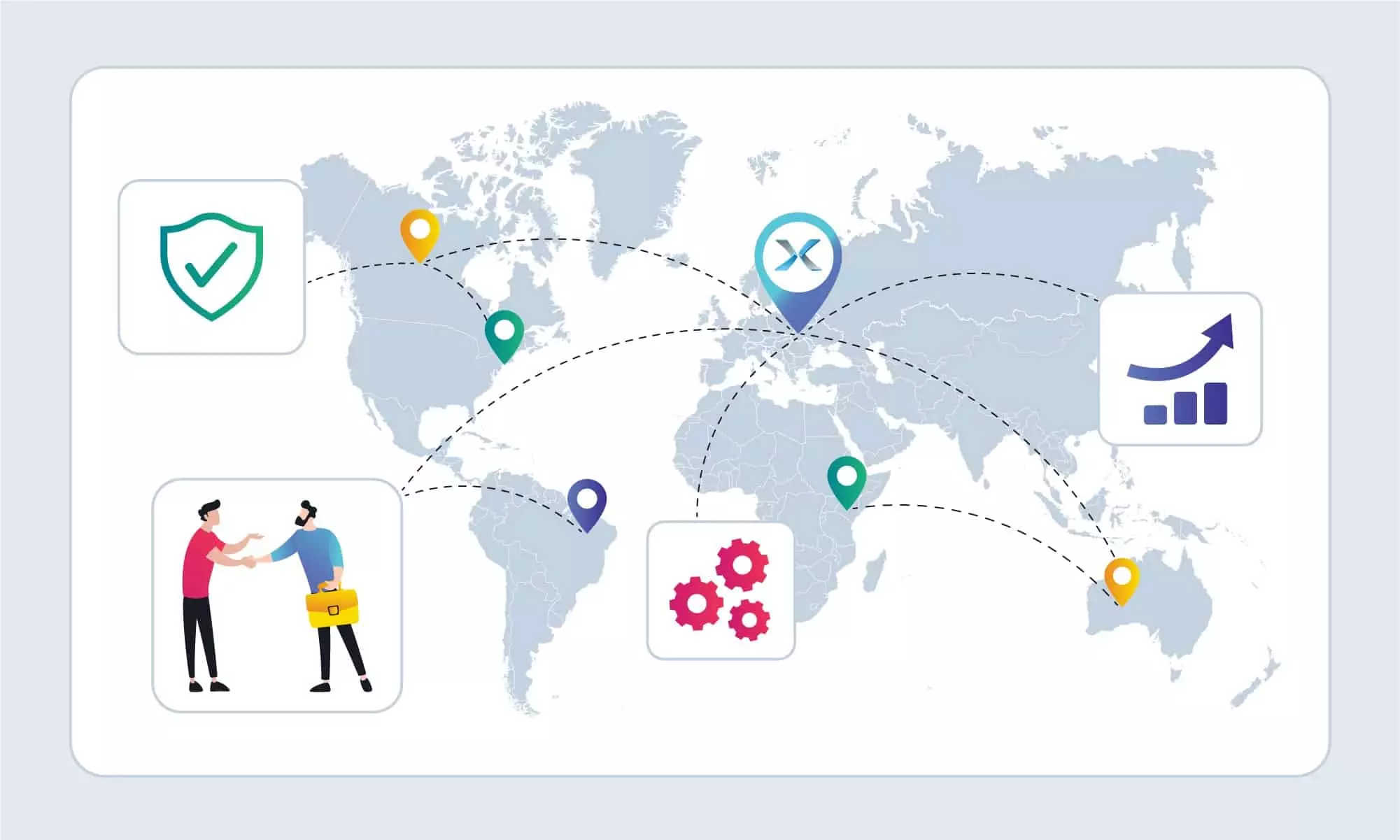
GIS in Real Estate: Enhancing Efficiency and Insights
Location is a fundamental factor in both GIS (Geographic Information System) and real estate. By leveraging GIS technologies, professionals in the real estate industry can obtain valuable data that includes property boundaries, quality assessments, and geographic peculiarities. This information is crucial for finding the perfect property match for clients, leading to time and cost savings for real estate agencies.
But how does GIS for real estate actually work? One of its key features is spatial analysis, which provides detailed information about a property's characteristics and its surrounding areas. With GIS, professionals can gain insights into the neighborhood's state, the availability of leisure facilities, proximity to shopping malls, commuting routes, and even the risk of natural disasters. In short, GIS enables real estate agencies to meet all their clients' expectations based on specific demands.

The data collected through GIS may seem like random numbers and words to an average land buyer. However, real estate agencies present this information in an easy-to-understand format: an interactive data layered map. This map allows users to analyze specific areas and visualize precise information. It includes various data layers such as location and addresses, settlement limits, zoning, zip codes, contour lines, accessible housing, opportunity zones, tax parcels, floodplain information, and permits for constructions, among others.
GIS data in real estate plays a crucial role in understanding the market. By combining land information with maps, professionals can observe hidden processes and make informed investment decisions. Before starting construction, factors such as topography, population density, income levels, and local regulations/restrictions need to be considered to ensure a successful outcome.
Leveraging GIS for Real Estate Success
GIS software is not only helpful for analyzing properties but also for gaining insights into competitors' positions in the market. By identifying their strengths and weaknesses, real estate professionals can make informed decisions that benefit their own business. Geographic information systems in real estate also play a significant role in property valuation, brokerage services, real estate management, property taxation, and state-owned assets management.
Benefits of Using GIS in the Real Estate Market
To further understand the necessity of GIS software in the real estate industry, let's explore some of its key benefits:
Time Saving
Researching real estate properties can be a time-consuming process. However, with GIS, professionals can gather valuable data from different sources and analyze it quickly and efficiently. The convenience of having all the necessary data at their fingertips in a user-friendly map format eliminates the need to visit multiple locations or websites. With just a few clicks, real estate professionals can analyze, compare, and discover properties of interest.
Pure Accuracy
In the competitive real estate market, accuracy is crucial for gaining the trust of clients. GIS technologies ensure that the information provided is accurate and up-to-date. The system is constantly updated to maintain accuracy and consistency in data presentation. By utilizing GIS for real estate, professionals can confidently choose the best locations based on factors such as planning, zoning, risk assessment, and land quality. Making well-informed decisions about location is essential for achieving success in real estate ventures.
Mobile Access
Mobile devices have become an integral part of our lives, and GIS applications for real estate make it convenient for professionals to access mapping systems even when they are away from their workplaces. Having mobile access to GIS technologies enables real estate agents and developers to address instant issues with clients on the go.

Communication Improvement
Clear and effective communication is vital for successful real estate projects. GIS in real estate enhances the communication process by visualizing information through graphics, data tables, maps, photos, and notes. This visual representation ensures that all involved parties have a clear understanding of the project details and promotes productive cooperation.
Long-running Capacity
GIS technology ensures that historical data spanning decades or even centuries is securely stored and easily accessible. Unlike physical maps that can fade or deteriorate over time, GIS maps retain their quality indefinitely. This long-term data storage capability is particularly advantageous for large real estate corporations with massive amounts of data. It guarantees that valuable information is never lost or unintentionally overlooked, providing easy access whenever needed.
Trust Inoxoft for Real Estate Software Development

If you're seeking a reliable partner to improve your real estate business, Inoxoft is here to assist you. As a leading real estate software development company with over 7 years of experience in the global market, we provide top-grade services and tools to enhance your property management operations.
Working with Inoxoft's dedicated team of software developers will offer you:
- A dedicated team committed to your project's success
- Flexible cooperation models that suit your specific needs
- Automation, backup, and security features to safeguard your data
- Clean code and data safety measures for a reliable software solution
- Robust architecture for seamless performance
- High-quality products that meet your requirements and expectations
- Efficient communication throughout the development process
Take a look at our case study on developing property management software for a USA-based real estate company to see our expertise in action. Don't hesitate to partner with Inoxoft and unlock the full potential of your real estate business.

















